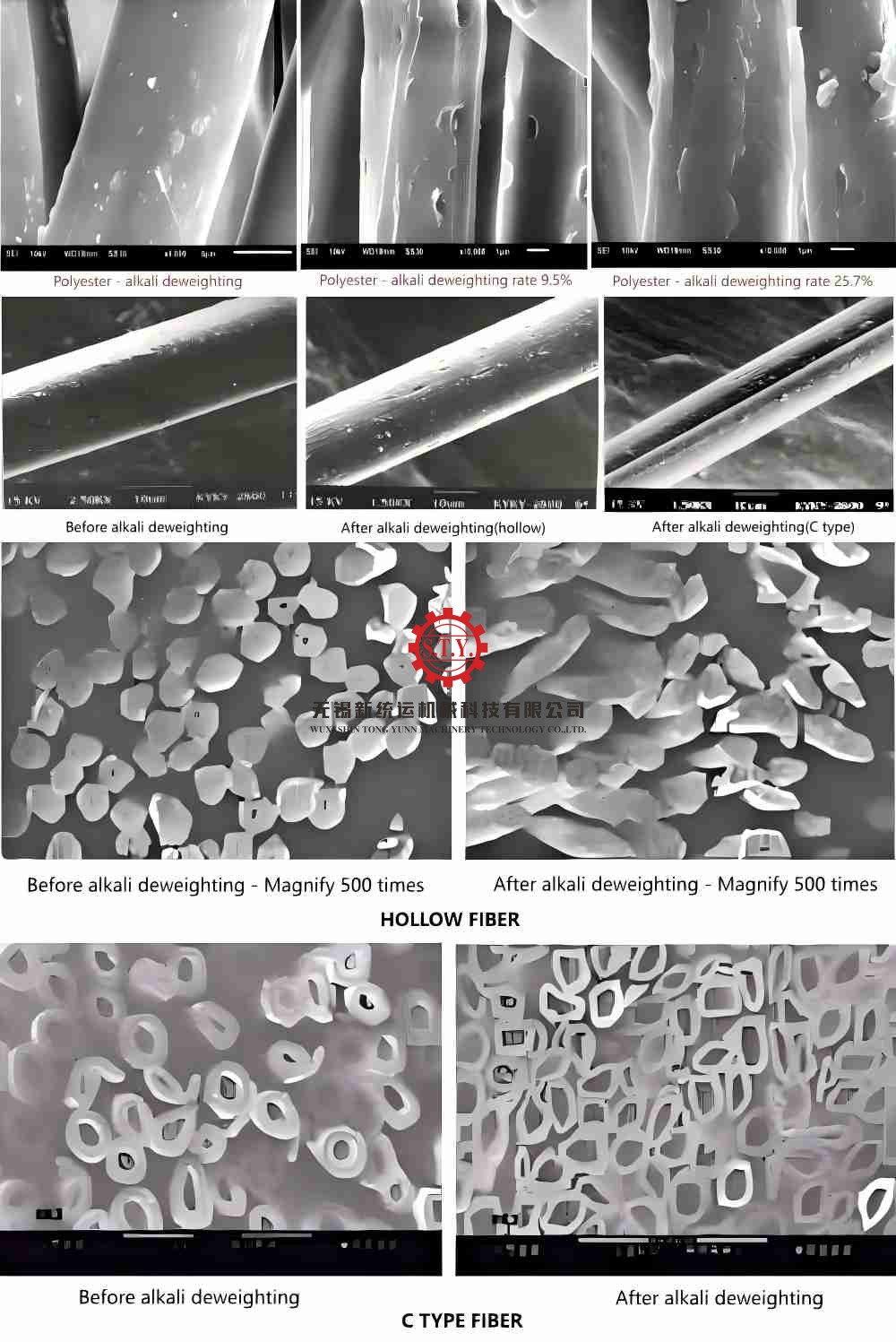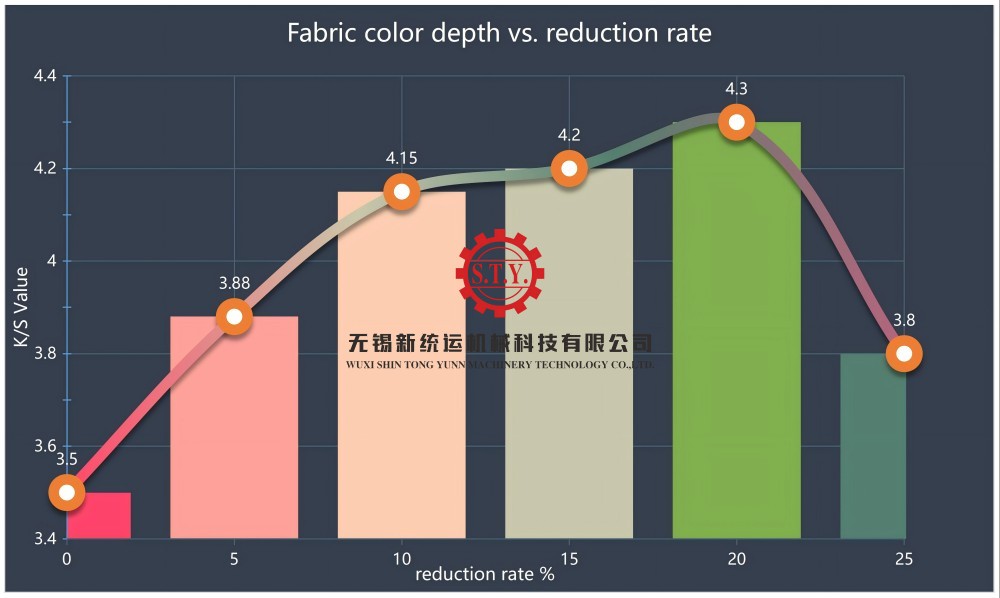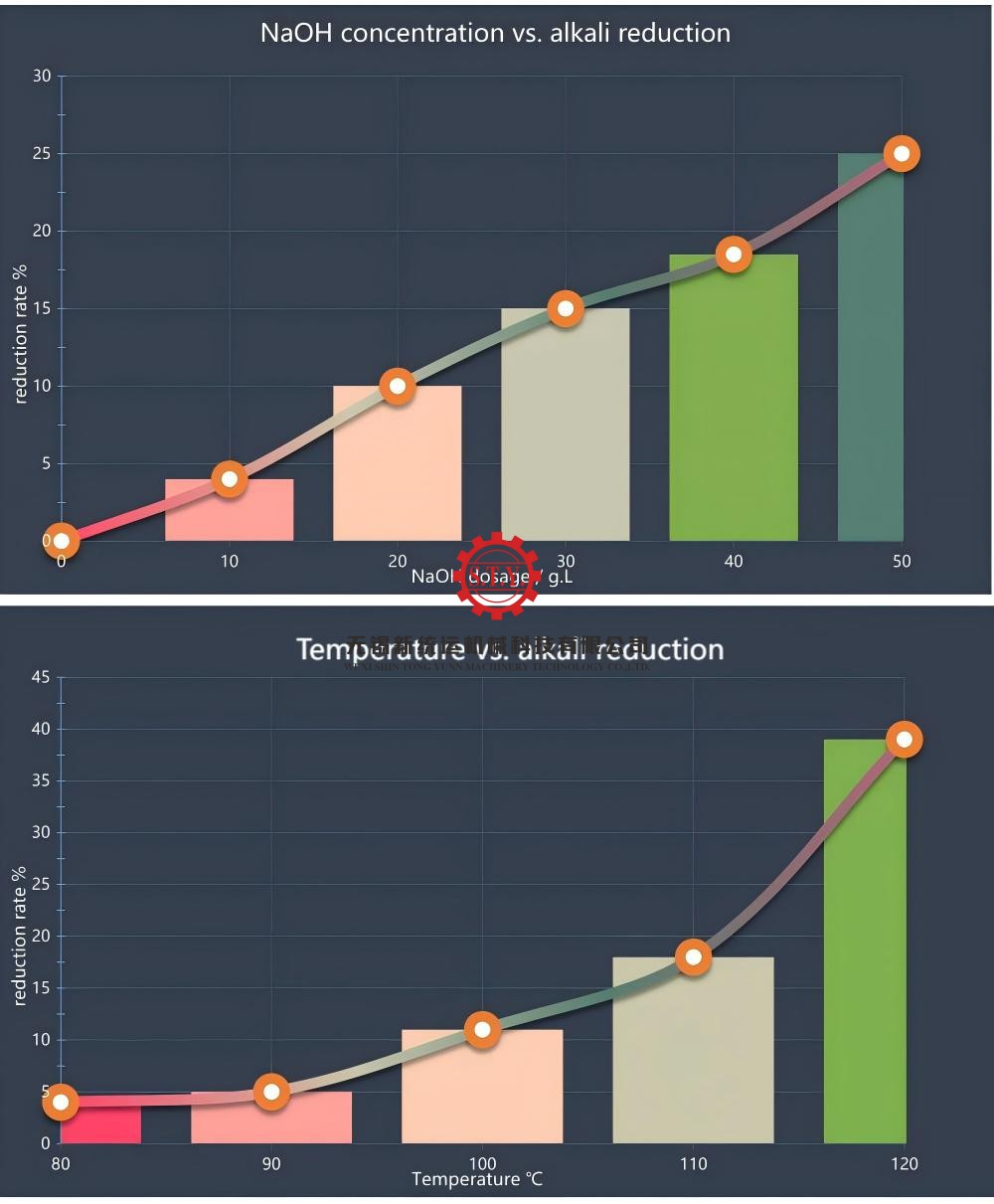Discover How Specialized Equipment & Process Control Transform Synthetic Fibers: 300% Dye Affinity Boost, Silk-Like Softness & Industry Compliance Strategies
In textile industry, polyester fabric has captured over 65% of global market share, yet their characteristic synthetic feel limits high-end applications consistently. Alkali deweighting treatment leads synthetic fiber modification technologies with 83% industry adoption rate. Developed in the 1970s, chemically precise process transforms polyester material by imparting silk-equivalent suppleness and superior dye affinity. Drawing on 25 years of specialized R&D in textile dyeing system, our engineering team analyze this core technology and explains why professional textile dyeing enterprises exclusively use stand-alone equipment for this process.
I. "Slimming Beauty Treatment" in Textile Industry: Alkali Deweighting Technology
1.1 What is Alkali Deweighting?
Alkali deweighting treatment acts as chemical spa for polyester fabric. Using specialized strong alkali solution (primarily sodium hydroxide, NaOH) under high temperature, it induces controlled *micro-etching* on polyester fiber surface. This process fundamentally alters molecular structure of polyester through hydrolysis:
Chemical Reaction:
[-OOC-C6H4-COO(CH2)2O-]n + 2nNaOH → nNaOOC-C6H4-COONa + nHO(CH2)2OH
Key Mechanisms:
- Catalytic Effect: OH⁻ ions reduce ester bond cleavage activation energy by 62%
- Neutralization Effect: Instant neutralization of generated carboxylic acids (maintaining pH > 12)
Equipment Requirements:
- Alkali deweighting demands alkali-resistant reactors with:
- pH > 14 corrosion resistance
- High-temperature stability (95–130°C) with thermal sealing systems
- Titanium alloy/ceramic material (Titanium alloy with 10× greater corrosion resistance than stainless steel)
Under controlled conditions, NaOH solution triggers selective hydrolysis, creating micrometer-level surface etching to achieve:
- Elimination of synthetic gloss
- Enhanced softness and skin-friendliness
- Improved moisture-wicking capabilities
1.2 Operational Safety Guideline (ISO 105-C06:2024 Compliance)
| Parameter | Standard Range | Danger Threshold |
| NaOH Concentration | 15–25 g/L | >30 g/L |
| Temperature | 85–95°C | >105°C |
| Duration | 30–60 min | >90min |
II. From Microstructure to Macroscopic Transformation: Five-Dimensional Fabric Enhancement
2.1 Fiber Structural Revolution (SEM Imaging Analysis)

SEM images of polyester fibers treated with [Professional Alkali Deweighting Equipment]
Post-treatment fibers exhibit:
Low deweighting rate (3–5%): Nano-scale pits (avg. depth: 0.3 μm)
Medium deweighting rate (10–15%): Continuous groove structures (pit density: 42/μm²)
High deweighting rate (20%+): Longitudinal fiber splitting (critical risk threshold)
2.2 Hand Feeling Performance Upgrade
ASTM D5034 testing reveals:
- 40–60% reduction in bending rigidity
- 35–50% decrease in shear resistance
- Drape coefficient matching silk (0.55–0.65)
2.3 Optical Property Transformation
Spectrophotometric analysis confirms:
- Specular reflectance reduced from 85% to 30–45%
- Diffuse reflectance increased to 85%
- "Pearly luster" visual effect achieved
2.4 Mechanical Property Evolution
- Tensile strength: Linear decline with deweighting rate
- Longation at break: Initial increase followed by decrease
- Young's modulus: Peaks at 8–12% deweighting rate
| Deweighting Rate | Strength Change | Young's Modulus | Softness Rating |
| 5% | ▼8% | ▲12% | ★★★ |
| 15% | ▼35% | ▼18% | ★★★★☆ |
| 25% | ▼60% | ▼42% | ★★★★★ |
2.5 Dyeing Performance Breakthrough
After treatment, fabric exhibits parabolic K/S value (color depth index), peaking at 12–15% deweighting rate with 300% improvement VS untreated fabric.

High-temperature dyeing machine tests demonstrate:
- Dyeing activation energy reduced from 98 kJ/mol to 62 kJ/mol
- Diffusion coefficient increased 3.6×
- Equilibrium dye uptake rate reaches 95%
| Deweighting Rate | K/S Value | Color Fastness | Chromatic Saturation |
| 5% | +35% | 4–5 Grade | ▼8% |
| 15% | +120% | 4 Grade | ▼15% |
| 25% | +80% | 3–4 Grade | ▼22% |
III. Golden Rules of Process Control
3.1 Concentration-Temperature Synergy
Experimental data shows when NaOH concentration exceeds 20% and temperature surpasses 95°C, reaction rate increases exponentially. Processing duration follows temperature-dependent exponential relationship, necessitating professional control system for precision. Over-etching risk causing significant strength loss if unregulated.

3.2 Art of Time Control
Adopt three-phase processing protocol:
- Pretreatment (80–95°C, 0–20 min): Surface activation
- Main reaction (95–110°C, 20–50 min): Uniform etching
- Post-stabilization (110–130°C, 50–60 min):Reaction termination
3.3 Selecting Suitable Alkali Deweighting Equipment
| Production Demand | Recommended Equipment | Key Configuration Requirements |
| Small-batch trials (<1 ton/day) | Modular alkali deweighting units | Titanium alloy reactor + pH auto-regulation |
| Large-scale continuous production | Fully automated lines | Alkali recycling system + AI temperature control |
IV. Critical Considerations for Equipment Selection
4.1 Why Can't Choose Standard Fabric Dyeing Machines?
Material Limitations:
High-temperature dyeing machine typically uses 316L stainless steel, but prolonged exposure to hot alkali (e.g., NaOH) will:
- Destroy the passive oxide layer, triggering pitting/stress corrosion cracking
- Cause hardening and cracking of rubber/plastic seals, leading to leaks
Process Incompatibility:
Alkali deweighting requires ±0.5% NaOH concentration stability and ±1°C temperature control—unachievable with standard dyeing machine architectures.
Contamination Risks:
Residual alkali reacts with acidic dyes in subsequent processes, reducing color fastness by 2–3 grades.
Cost Escalation:
- Extended high-temperature operation increases steam/energy costs by 35–50%
- Frequent replacement of corroded components raises maintenance expenses 3–5×.
4.2 Irreplaceability of Professional Systems
Five-Level Protection Framework:
- TA10 titanium alloy reactor (pH 14 resistance)
- Ceramic-bearing circulation pumps (zero metal contact)
- Intelligent slag discharge system (anti-crystallization)
- precision thermal control(±0.3°C stability)
- Alkali recovery module (65% NaOH reuse rate)
4.3 Strategic Recommendations
Short-term workaround: For temporary alkali deweighting in dyeing machine
- Limit NaOH concentration to <15%
- Reduce processing time by 20–30%
- Implement post-process neutralization washes
Long-term solution: For frequent alkali deweighting
- Procure dedicated equipment or retrofit existing machines with:
- Upgraded alkali-resistant liners (e.g., Upgrade alkali-resistant material)
- Isolated chemical circulation system
V. Industry Application Case Studies
- Sportswear: Nike Dri-FIT series employs 12% deweighting rate processing
- Luxury Womenswear: MaxMara coat fabrics undergo 18% deweighting treatment
- Medical Textiles: Antimicrobial polyester dressings with specialized surface modification
VI. Critical Q&A
Q1: How much strength reduction occurs post-treatment?
A: Professional testing confirms 75% warp strength retention and 82% weft retention at 15% deweighting rate.
Q2: Can silk-like hand feel be achieved?
A: 90% tactile similarity attainable at >18% deweighting rate combined with softener finishing.
Q3: How is environmental compliance ensured?
A: Modern closed-loop alkali recovery systems maintain wastewater pH ≤ 8.5, meeting ISO 14000 standards.
VII. Consumer Purchasing Guide
- Tactile Test: Premium treated fabrics exhibit warm, smooth texture without synthetic feel
- Visual Inspection: Look for soft diffuse reflection (no metallic glare)
- Water Droplet Test: Complete absorption within 5 seconds (vs. 30+ sec for untreated polyester)
VIII. Industry Innovations
- Ultrasonic-assisted deweighting: 70% efficiency improvement
- Bio-enzymatic synergy: 40% NaOH consumption reduction
- Smart closed-loop control: Real-time parameter optimization
All data presented are derived from 2024 testing conducted at National Key Laboratory of Textile Materials (China). Proper citation is required when referencing this data. Implementation of production process recommendations requires customization based on specific equipment parameters.
Read More:
- Fabric Shrinkage Control Guide: Prevent 23% Quality Issues in Dyeing and Finishing Processes.

- Why do creases often occur on the fabric surface? Engineers with years of experience have found a solution!
